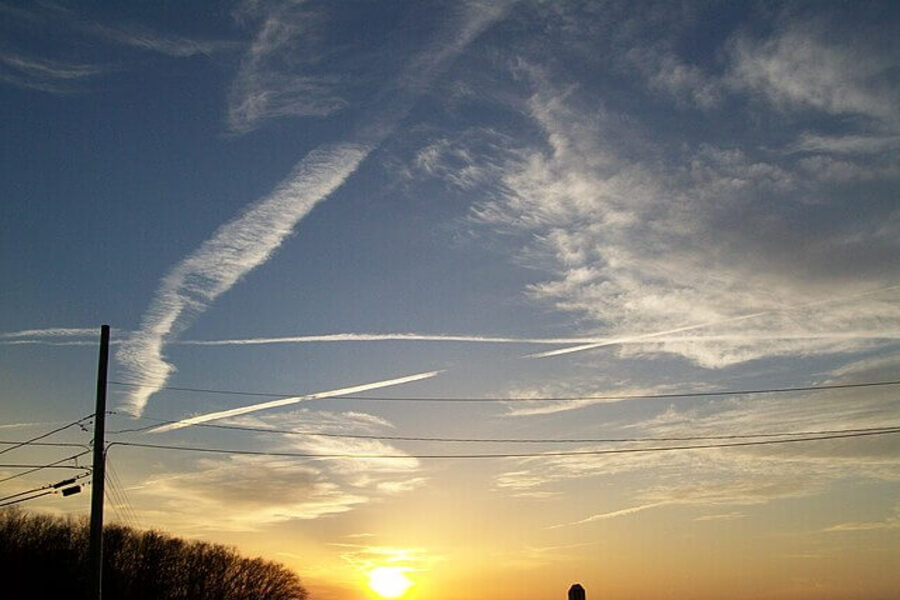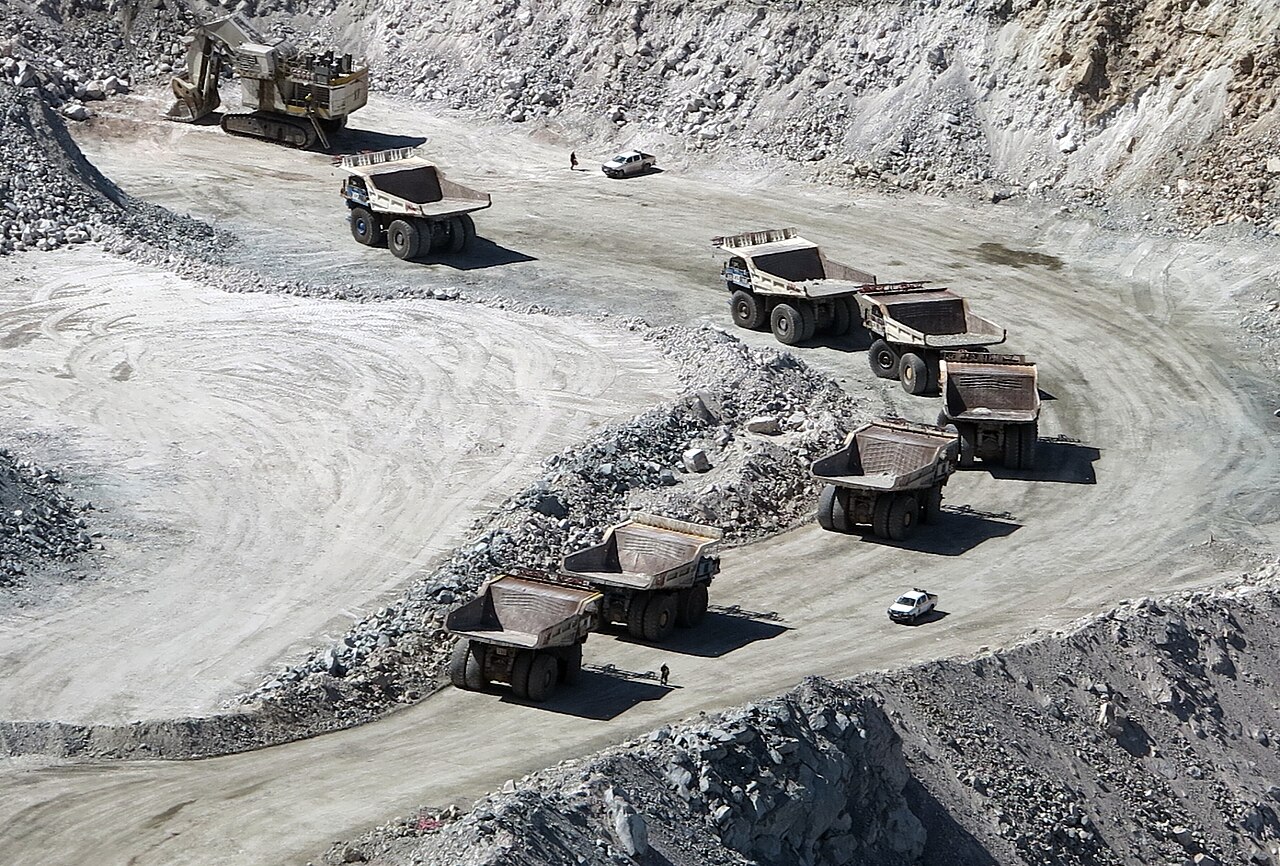Hot Commodities: Dropping Bombs, in Oil Market Terms
The Saudi decision to flood the oil market—otherwise known as the oil price rollercoaster we are currently riding—is what Andrew Scott Cooper calls the “oil trade’s equivalent of dropping a bomb on a rival.” However, while the prevailing wisdom holds that the rival is (now suffering) U.S. shale producers, Cooper argues otherwise.
Published by The Lawfare Institute
in Cooperation With

The Saudi decision to flood the oil market—otherwise known as the oil price rollercoaster we are currently riding—is what Andrew Scott Cooper calls the “oil trade’s equivalent of dropping a bomb on a rival.” However, while the prevailing wisdom holds that the rival is (now suffering) U.S. shale producers, Cooper argues otherwise. In an op-ed for the New York Times, Cooper says the Saudis had Iran squarely in their sites when they unleashed the oil weapon—only to find that as prices plummeted well below expectations, the weapon actually turned against them.
While Cooper points out that both the tactic—flooding the market—and the target—Iran—are not new, this time the Saudis “overplayed their hand.” In Foreign Policy, Robert Mosbacher Jr. agrees, calling the production decision “short-sighted,” noting that the combination of the supply glut and sluggish Chinese demand could cause prices to drop so low that future investments are deferred and projects are cancelled, laying the foundation for the next oil shock.
Given that Saudi might also benefit from the kind of oil price shock Mosbacher warns about, one might argue that they are still playing the long game, now just hoping that it won’t be too much longer. However, following a Moody’s downgrade from stable to negative, the outlook for Saudi GDP growth is worsening along with the operating environment for financial institutions. The risks of playing the long game may be rising.
In a report on the Coming Petroleum Revenue Crisis, Anthony Cordesman warns that these long-term risks may be sooner on the horizon than we think. He argues that the same structural problems and long-simmering political grievances which erupted during the Arab Spring, from demographic pressures and the youth bulge to unemployment and unaccountable governments, have gone unaddressed and ignored during the interim years of high oil prices. Cordesman warns that as fiscal fortunes decline, domestic dissatisfaction will rise and crisis could be the outcome.
Even efforts to deal with the new fiscal realities, if not carefully considered, could trigger a crisis. What could this look like? Take Angola, where Quartz reports that efforts to get the country’s fiscal house in order resulted in budget cuts to water sanitation and waste collection—a decision now thought to be responsible for an increase in communicable diseases like yellow fever.
Drones for Oil
While the lack of oil revenue may cause some countries to go without, the presence of oil resources gives others the leverage to get what they want. Take, for example, Nigeria, where reports suggest that China is exporting drones and other military technology to gain access and influence in an increasingly important oil producing country.
According to Michael McDonald in Oilprice, China is leveraging its drone technology—along with the fact that it is not constrained by the Missile Technology Control Regime—to gain access to oil fields in countries like Nigeria and Iraq. P.W. Singer and Jeremy Lin have previously reported on the symbiotic relationship between China and Nigeria, the former in need of oil and customers for its military technology and the latter in need of affordable military technology to grapple with a domestic insurgency and ever thirsty oil customers.
While it remains to be seen if the high interest continues amid slowing Chinese domestic demand and a buyer's market, the potential for such symbiotic swaps could prove a new value-added for oil producing countries dealing with domestic insurgencies or involved in regional upheaval. And while drones are also increasingly being used in oil field services, it is not hard to imagine how an oil-for-drones agreement might go wrong, particularly in the absence of strong international guideline and global governance on drone exports and use.
Old Tactics, New Tools
Drones are not the only trend shaping both the energy sector and the future of warfare. As the fallout from the cyberattack on the Ukrainian electric grid continues, the question of the role of energy in conflict becomes more complex.
In Defense One, Patrick Tucker explains the implications of the cyber attack for the future of war, noting that the attack on the Ukrainian electric grid was neither an isolated incident nor an accidental or random target. Rather, the attack is part of the larger competition to “provide electricity to people in eastern Ukraine” and thus solidify control over territories and populations. And part of a strategy to undermine the appearance that Ukraine can provide stable and reliable services to its population.
While the attack shed light—and raised alarm bells—on the vulnerability and crucial nature of energy infrastructure, namely the electric grid, it also emphasizes the degree to which energy service provision, and control over resources, as well as transmission and distribution networks which bring them to end users, can be a front for competition and conflict.
Whither April Showers
While many in the U.S. have remained focused, for good reason, on the California drought, a new study from NASA concludes that the recent drought in the Mediterranean and Levant was the worst in the region in 900 years. The drought, which is generally thought to have lasted from 1998 to 2012, is cited by some scholars as one of many factors contributing to tensions which led to the outbreak of the Syrian civil war, as farmers and landowners were forced from the countryside to the city in search of new opportunities.
However, while making a connection between drought and social unrest is complicated at best and contested by many, the degree to which drought, and the impact of drought on agriculture and food supply, is a question worth considering, particularly in contemplating the impact of climate change. As Secretary Kerry put it last October, while drawing a causal line between drought (or climate change which causes drought) and conflict may be complicated, in Syria it “clearly made a bad situation a lot worse.”
While the causal line may be a bit unclear, the Administration appears to be heeding the lessons from Syria. The Administration is deploying disaster response teams to Zimbabwe to “address a humanitarian emergency and avoid a national security risk to the U.S. should the drought there spiral out of control,” according to CNN. The drought is anticipated to be more severe than the one in 1984 which took the lives of one million people (and inspired this musical montage). According to the UN World Food Program, the Ethiopian government estimates more than 10 million people are in need of urgent food assistance, and humanitarian needs have tripled since this time last year.
In addition to averting humanitarian disaster, the Administration is also hoping to stave off potential destabilization in a country which has proved quite successful in its counterterrorism efforts and served as a reliable security partner in the Horn of Africa.
What to Watch
Conscious Uncoupling
At last week’s Berlin Energy Transition Dialogue, IEA Director Faith Birol highlighted new data which shows global greenhouse gas emissions remained flat for the second year in a row despite economic growth of 3.1 percent in 2015. According to the IEA, this still-nascent pattern of decoupling carbon emissions from economic growth signals that the link between the two is weakening.
This is good news for those hoping for progress on reining in carbon emissions in a post-COP21 world. As Keith Johnson put it writing in Foreign Policy, “the world seems to have found a way to keep growing every year without further destroying the environment.” However, it may be too soon to celebrate.
Many countries are struggling to address limited access to energy and still prevalent energy poverty. Rising living conditions in these countries will also likely mean rising energy demand—and potentially rising carbon emissions. As Kavitha Rajagopalan writes in The Observer, India is facing a “looming energy crisis”—a crisis we are all likely to share unless the country makes “radical changes in how it produces and distributes energy.” If you want convincing on why these radical changes are necessary, this Yale environment 360 article on the “human cost” of India’s increasing coal habit should do the trick.
Fracking Fracas
India is not the only one tending to its energy future. As March winds down, Shell and Apache are ramping up a hydraulic fracturing pilot project in Egypt’s Western Sahara. The announcement comes over a year after the Egyptian government awarded the contract to the two companies, and on the heels of the Zohr field discovery off the coast of Egypt, thought to be the largest natural gas deposit in the Mediterranean.
Amid a growing population and declining domestic production—and unreliable supplies from neighbors—the two discoveries are welcome news for Egypt, the largest oil and gas consumer in Africa. And, as Oilprice notes, getting at the gas should be relatively easy as environmental or political opposition is non-existent.
However, the future of fracking in Egypt is clouded by the specter of attacks on energy infrastructure in the region. The historical precedent, especially following the Arab Spring, for such attacks in Egypt is strong, particularly in the Sinai, where the Egyptian branch of ISIS claimed responsibility for an attack on a pipeline carrying gas to Jordan and industrial zones in the Sinai in January of this year.
And there is little comfort in incidents like the recent rocket attack on the Krebcha gas plant in Algeria, which Al Qaeda in the Islamic Maghreb claimed responsibility for over the weekend. While the attack did not claim any lives, it has brought back memories of the attack and hostage taking at the Amenas gas facility in 2013 by al-Murabitun, an al Qaeda splinter group whose former (now-deceased) leader called on followers to attack oil and gas facilities.
However, unlike in Egypt, the Wall Street Journal reports that in Algeria domestic concerns over the environmental implications of shale gas production are on the rise—a development that has not escaped the attention of Al Qaeda. According to the Journal, the terrorist organization “appears intent on tapping this popular resentment” by targeting shale gas production.
To Lift or Not to Lift
As spring has officially begun, summer—and the reconsideration of the EU sanctions against Russia—is just around the corner, as the EU must act to prolong sanctions targeting the Russian energy, banking, and defense sectors in July. However, from refugees to energy infrastructure to the Brexit, EU agreement is hard to come by these days. Following statements by Hungary and Italy that there will be no automatic renewal of sanctions against Russia, it does not appear that things will be getting easier any time soon.
While the debate is just beginning, and will likely be overshadowed by looming problems as Europe tries to address the refugee crisis, this comes as U.S. officials acknowledge that sanctions against Russia have been more effective thanks to low oil prices. Natural Gas Europe reported State Department Coordinator for Sanctions Policy at the State Department called low oil prices a force multiplier.
However, while a lot can happen between now and July, even a lifting of sanctions does not mean smooth sailing for Russia. Oil prices expected to remain low in the coming months and there is little sign that the U.S. appetite for maintaining Russian sanctions is flagging. Iran could serve as a cautionary tale, where Politico reports that remaining U.S. prohibitions are limiting a return to “business as usual.”





